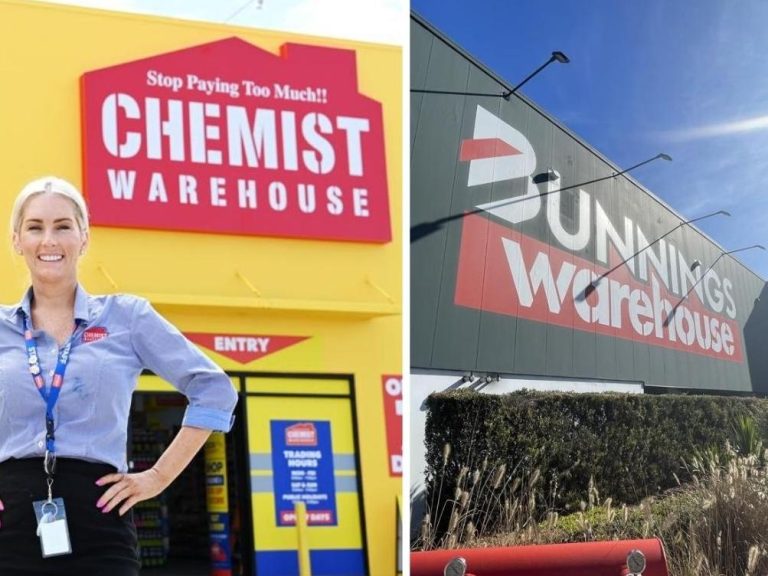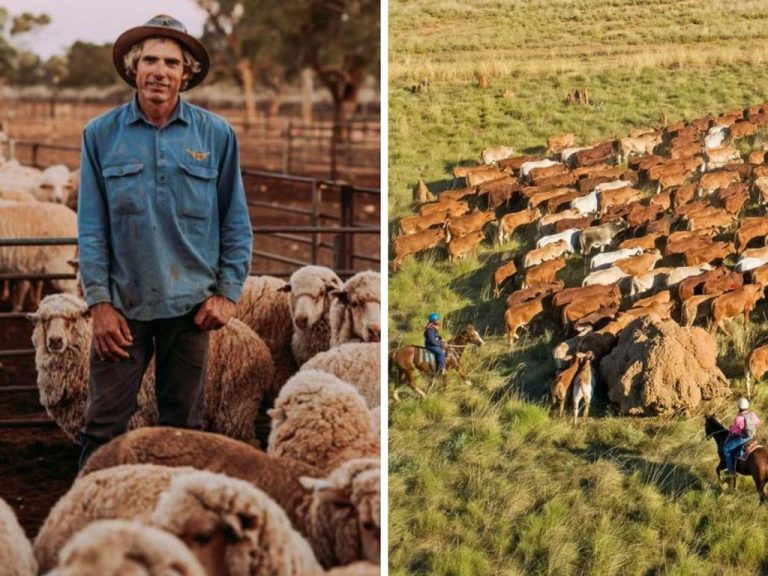Corner store no more: The rise and fall of the Aussie milk bar
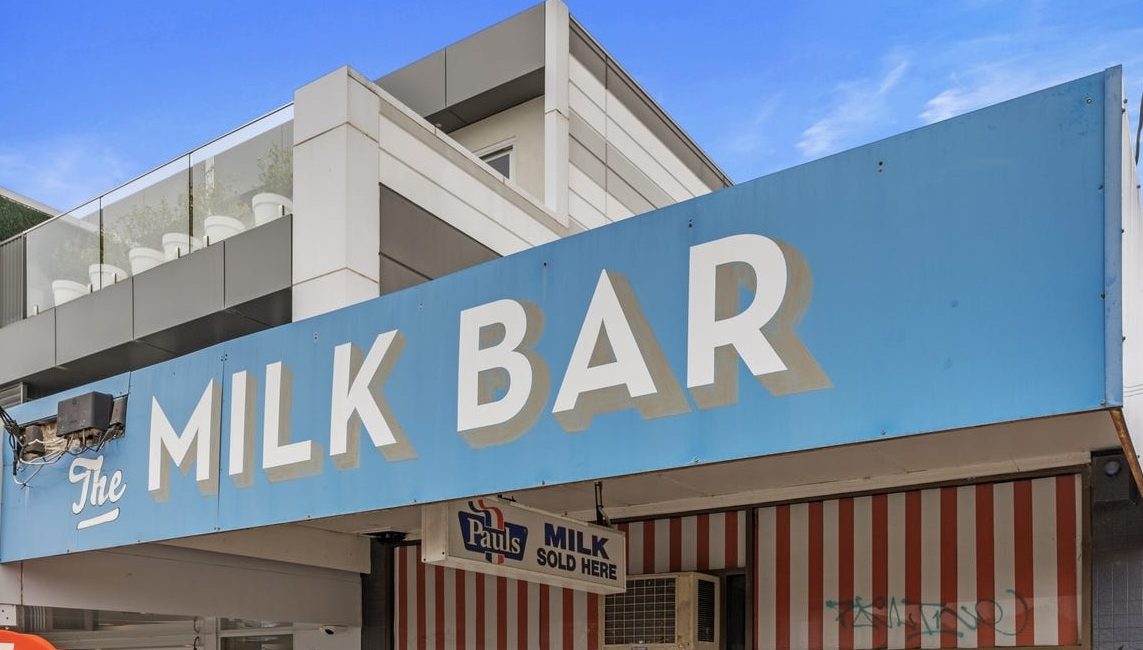
Once a staple of suburbia, the humble neighbourhood store has largely faded from our streets, but not our memories.
If you grew up in New South Wales, you’d have called them milk bars. For Victorians, it was the corner store. Western and South Australians? The deli.
Semantics aside, no matter where you grew up, the experience was likely the same – a small family-run establishment where you could buy bags of lollies, ice cream, milk, or even the newspaper.
Some could even whip you up a fresh milkshake or burger with the lot.
“They were such an iconic part of Australia and our childhoods that you’d be hard pressed to find someone who doesn’t have a nostalgic memory of their local milk bar,” said author Eamon Donnelly, who has published two coffee table books documenting their history.
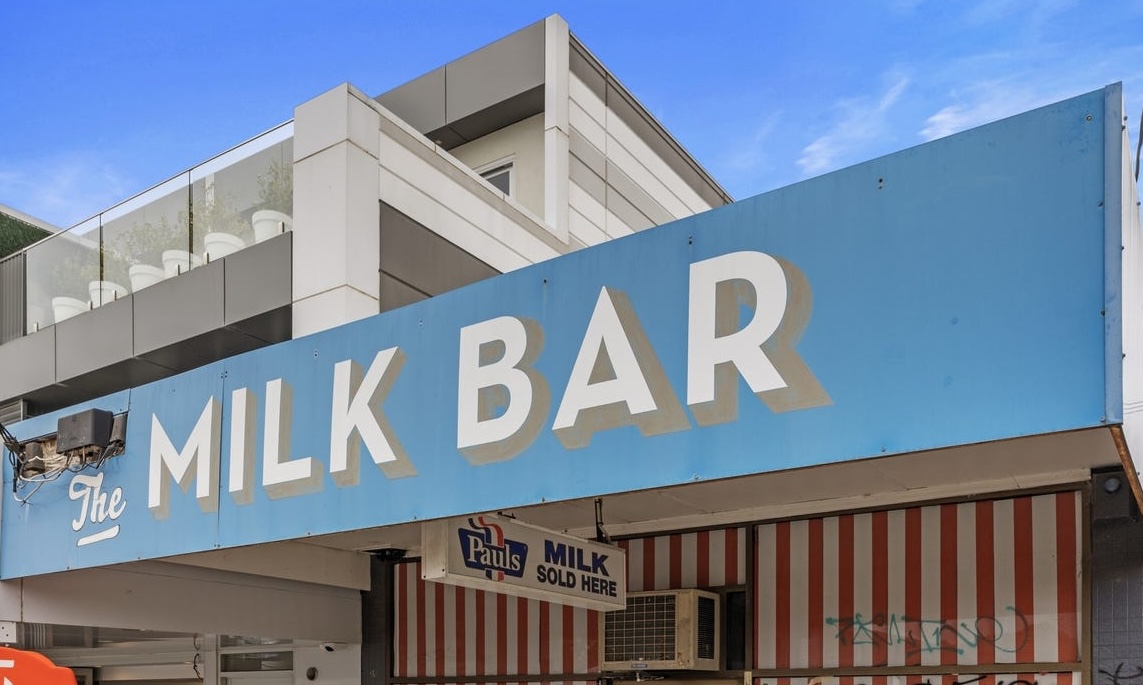
The iconic Milk Bar was once a staple of Australian suburbia. Picture: realcommercial.com.au
“Whether it was a strip of suburban red brick, weatherboard or terrace homes, on the corner there would be the local milk bar sporting a colourful striped awning and plastered with ice cream posters,” remembers Mr Donnelly.
“They were an integral part of the local community that have sadly disappeared, but their history is fascinating.”
Drugstore soda bars and gold rush confectioners
While Australia was first introduced to the milk bar by Greek immigrants in the 1930s, their origins stretch as far back as the mid-to-late 1800s.
“There are three businesses you can trace them back to,” Mr Donnelly explained.
“First are the soda bars inspired by the American drugstore, which served flavoured carbonated water. Second is the confectioner, who’d sell tins of boiled lollies to people traveling from Melbourne to Ballarat during the gold rush.”
“And finally, you had the general store or grocer – basically a corner family store that would sell a lot of dry goods.”
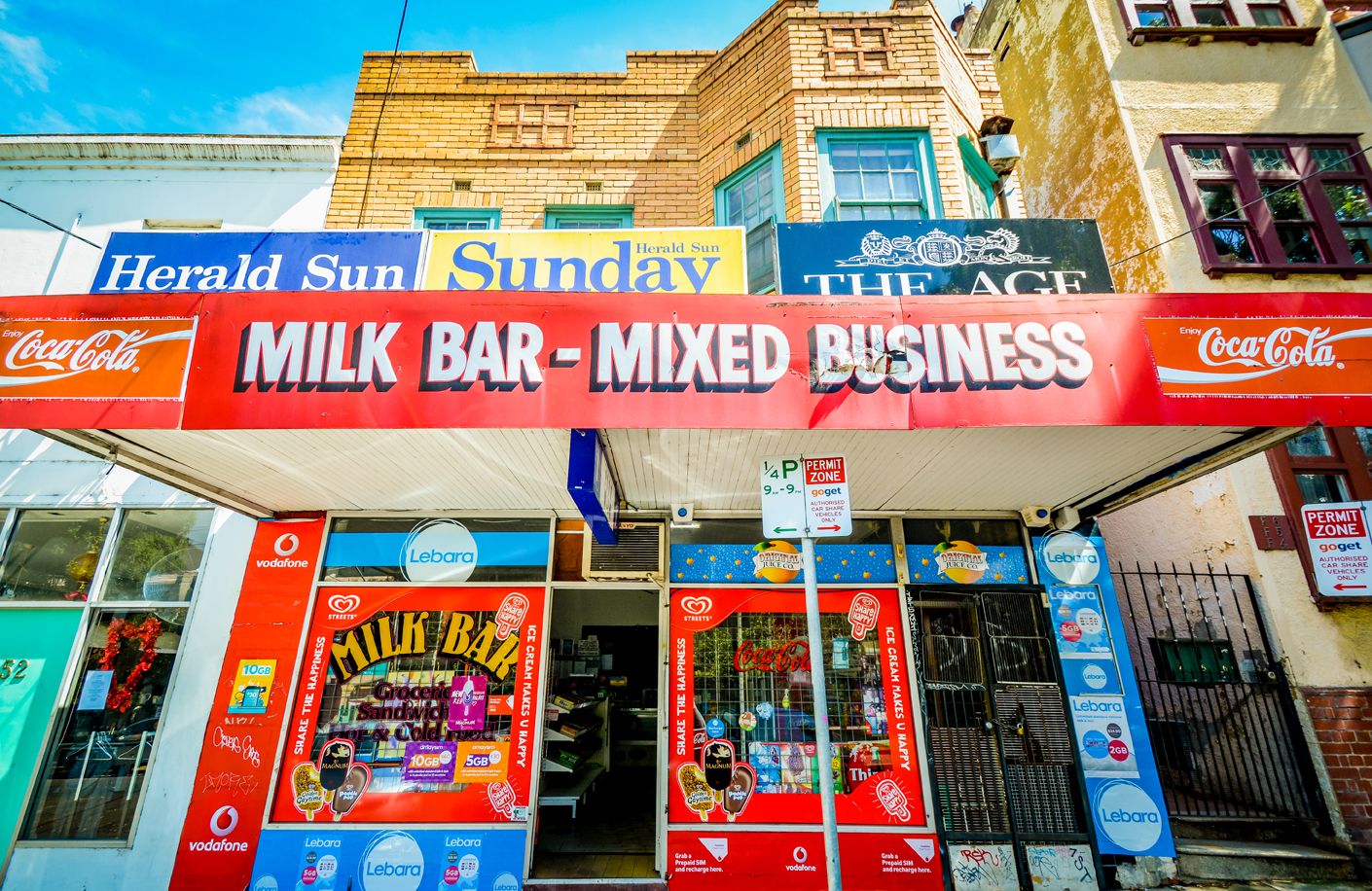
Milk Bars popped up around Australia in the early 1930s and grew into the thousands within five years. Picture: Supplied – Eamon Donnelly
All three were separate entities, however by the time the depression years of the 1920s rolled around, the lines had begun to blur, with businesses selling anything they could to earn a crust.
“A lot of the soda fountain bars started to sell lollies and imported Cadbury products from the UK, and likewise the small grocers began to offer their customers milkshakes and soda drinks,” said Mr Donnelly.
“It was the first inklings of the store we would eventually come to know and love.”
Australia’s first milk bar
Greek entrepreneur Mick Adams is credited with bringing the first incarnation of the ‘traditional’ milk bar to Australia.
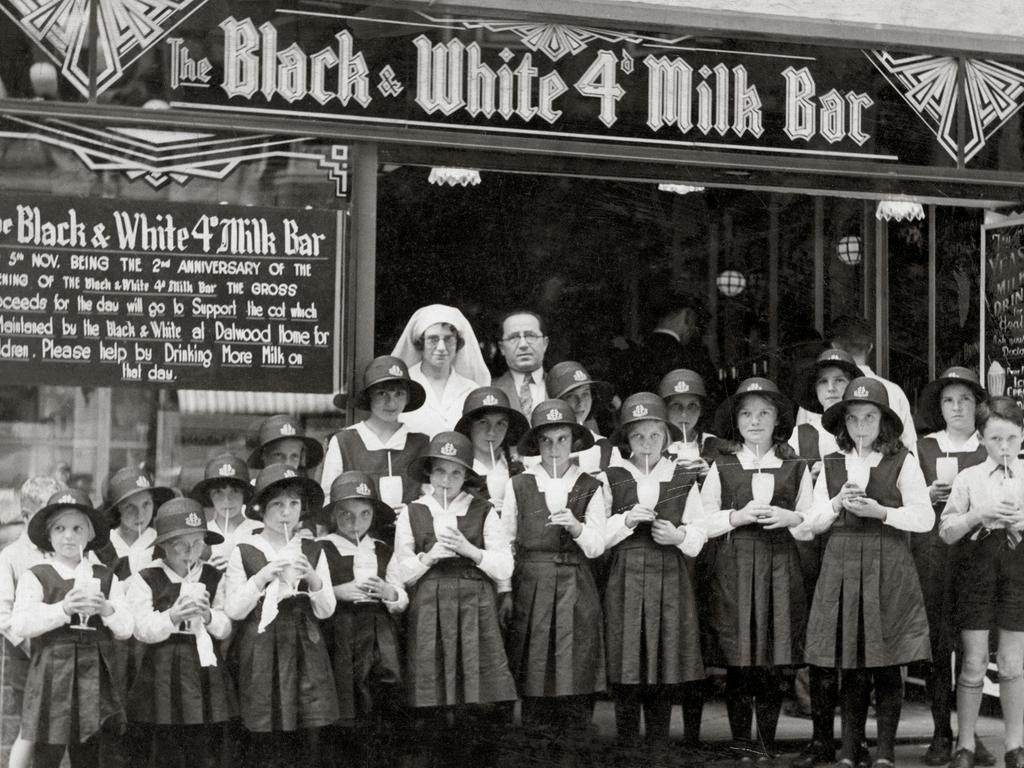
Mick Adams (rear centre) opened Australia’s first milk bar at Martin Place in 1932. Photo courtesy L. Keldoulis, from the In Their Own Image: Greek-Australians National Project Archives
Opened at 24 Martin Place in Sydney in 1932, his Black and White 4d. Milk Bar sported a sleek bar topped with soda fountain pumps and gleaming milkshake makers.
“Adams was influenced by both the American drugstore soda parlour and the ‘galactopoleion’ – a traditional Greek shop whose main commercial interest was the sale of milk products,” explained Leonard Janiszewski, historian and co-author of Greek Cafes & Milk Bars of Australia.
“A rapid stand-up trade in milkshakes became the successful commercial foundation of his milk bar concept.”
It proved incredibly popular, with the milk bar serving 5000 customers on its first day of trade, which quickly grew to 27,000 a week.
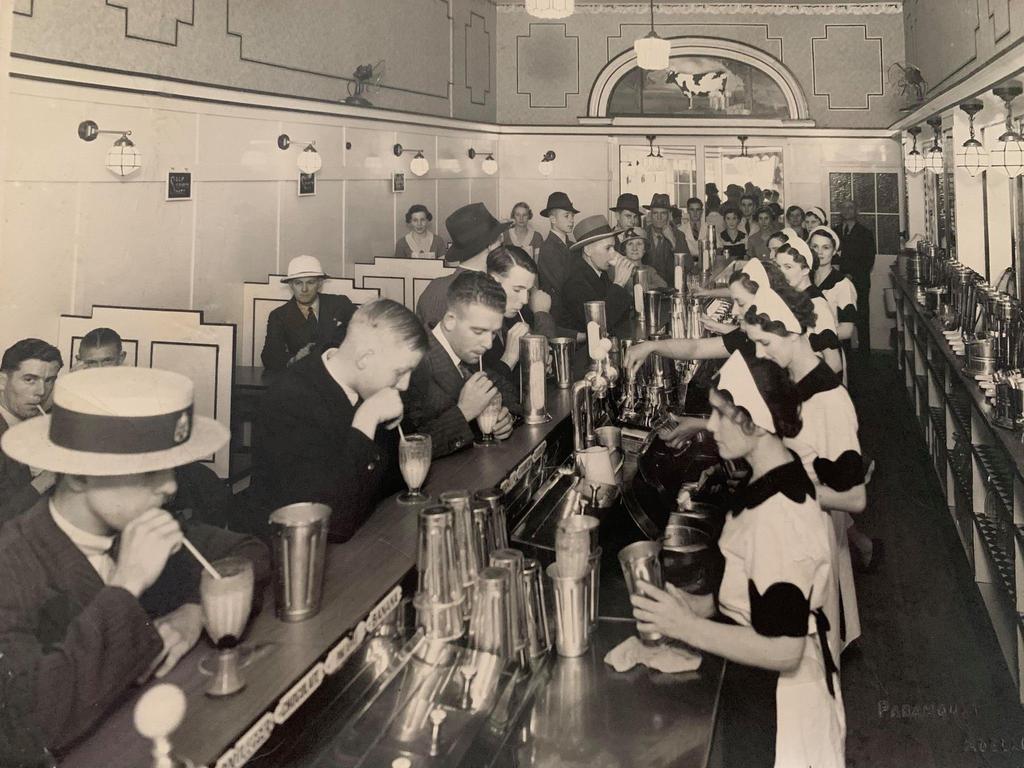
Sydney was where the milk bar was founded before spreading across Australia and the world. This is Adelaide’s Black and White Milk Bar, in King William Street, in 1936. Picture: Supplied by Allison Aldam
Within five years of Adams launching his milk bar concept, there were 4,000 milk bars operating in Australia offering milkshakes and Hollywood art deco glamour – most of them Greek-run.
One of the contributing factors to their popularity, said Mr Donnelly, was milk and ice cream being marketed as a health food at the time.
“The Peters Ice Cream slogan was ‘The health food of a nation.’”
Evolution of the milk bar
As the decades rolled into the 1950s and ‘60s, milk bars began to introduce confectionary, juke boxes, pinball machines and assorted youth culture trappings.
“That these Greek entrepreneurs chose to import modern American culture to Australia rather than traditional Greek suggests much about the fascination and safety of American culture for Greek-Australians living in the age of ‘White Australia’,” noted Mr Janiszewski.

Many old Milk Bars have been converted into residential dwellings, or commercially repurposed into offices, retailers or cafes. Picture: realestate.com.au/sold
The milk bar concept was soon adopted by cafés and cinemas, with the latter creating their own candy bars and incorporating a licensed milk bar proprietor on premises.
Corner stores and mixed businesses quickly followed suit, marking the beginnings of the ‘modern’ milk bar and appropriation of the name itself.
“The term ‘milk bar’ became a common synonym for any corner store, convenience outlet, mixed business or takeaway,” explained Mr Janiszewski.
Battered sav survival
By the late 1970s, Mick Adams’ original milk bar concept had been overtaken by the newly evolved neighbourhood store version.
But even these stores had begun to struggle as they faced rapid socioeconomic change and mounting competition from supermarkets.
In an effort to survive, milk bars began to incorporate hot food, selling everything from takeaway sandwiches and light lunches to Chiko Rolls, battered savs, potato scallops, hot chips, and even souvlaki and hamburgers.
“The funny thing is, retail stores like these have always struggled,” said Mr Donnelly.
“Even going back to the 1800s, these kinds of businesses have always had to find new ways to innovate in the face of change.”
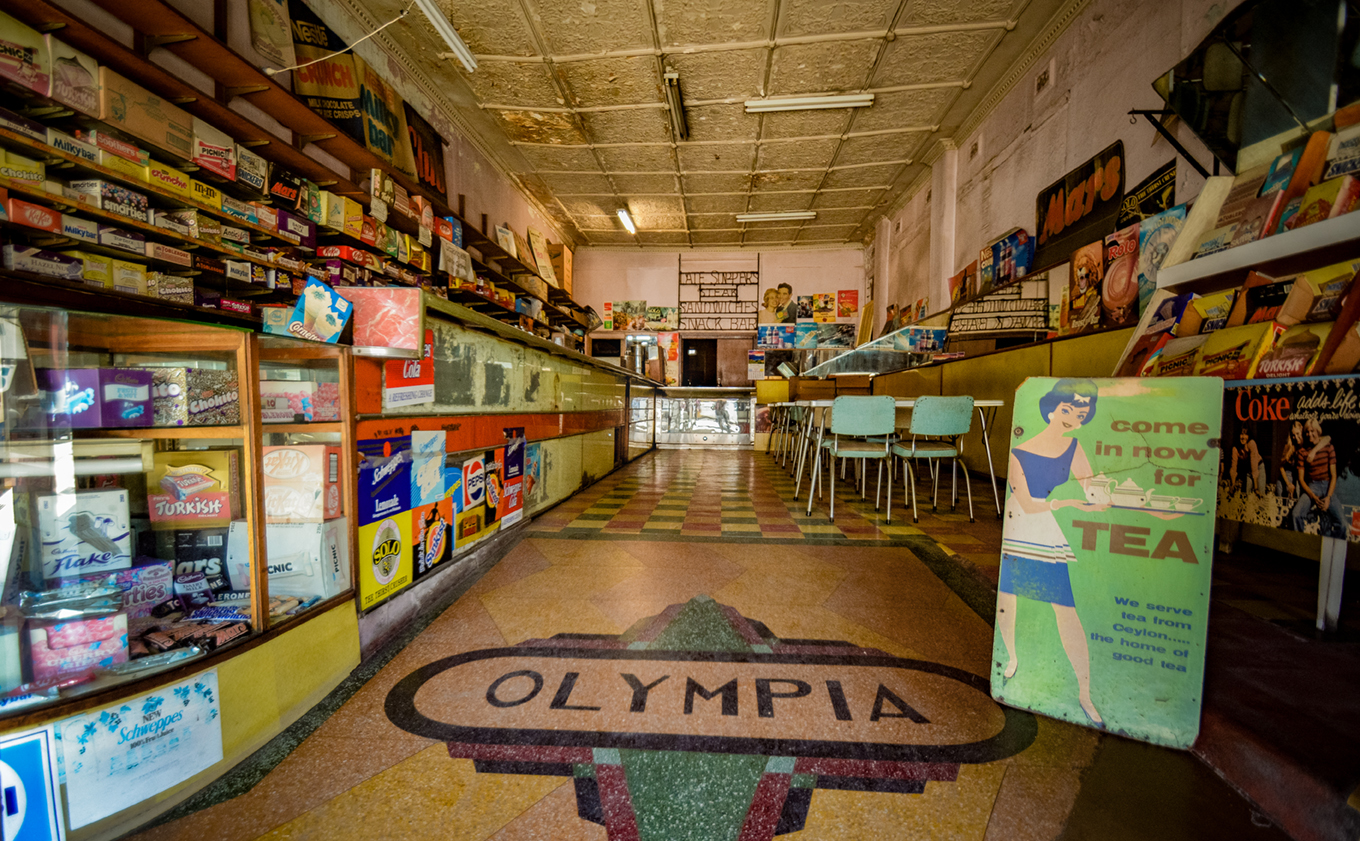
Olympia in Sydney’s Stanmore remained frozen in time until it was forced to shut after falling into disrepair. Picture: Supplied – Eamon Donnelly
By the mid-1980s, milk bar numbers had begun to steadily decline, with the children of many Greek and Italian owners opting to acquire a university education and enter the professional workforce in favour of taking over the family business.
By the close of the 20th century, many families retired and sold their business, but a significant number simply chose to close up shop, according to Mr Janiszewski.
“A dwindling number of these evolved milk bars still exist, particularly in Melbourne, but most have been relegated to memory or oblivion.”
Keeping the dream alive
While the milk bar is largely a relic in today’s retail landscape, there are some still keeping the dream alive.
Bells Milk Bar in Broken Hill is considered one of the oldest still operating in Australia and one of the few places where customers can enjoy close to an original milk bar experience.
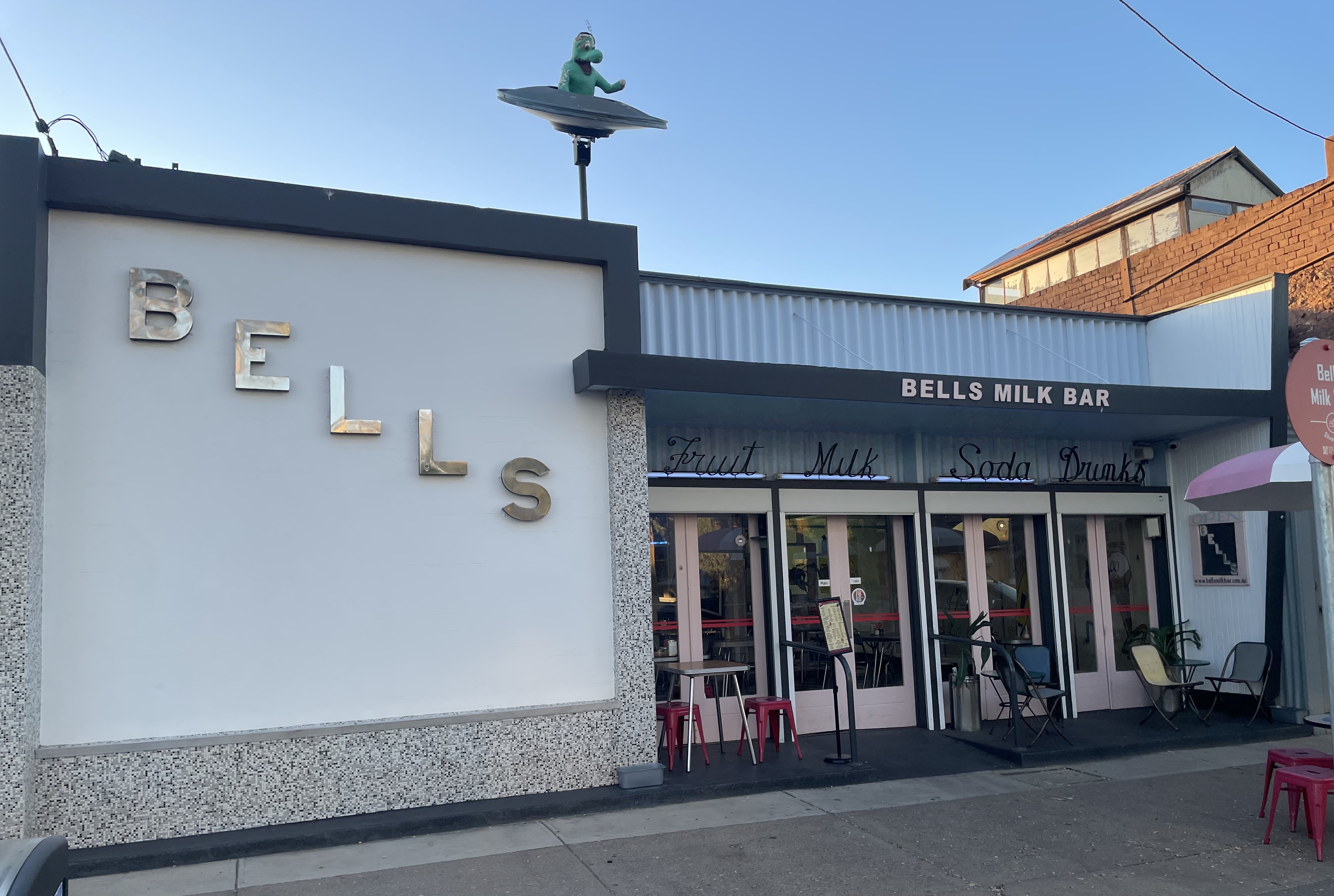
Bells in Broken Hill is said to be one of Australia’s longest continually running milk bar. Picture: Supplied
The shop dates back to 1892 when it started as ‘F. Fenton Confectioner’. In 1956, owners Les Bell Junior and his wife Mavis adopted the original milk bar concept of the 1930s, with Les updating his mother’s old recipes by adding new ingredients to modernise them.
“I still have those original milkshake recipe cards which were handwritten by Les,” said current owner Kylie Evans, who took over the business in March.
“We serve the same milkshakes as Les and Mavis did back in the 1950s. We’ve only got two new ones that have been developed, but the rest are all Les’ original recipes.”
View this post on Instagram
Ms Evans has loved Bells Milk Bar from the moment she stepped into the store over a decade ago.
“I said to the owner at that time, ‘I’m going to buy this off you one day.’ I hounded him for 12 years until he sold it to Matt Spresser, who I then I hounded for a year and he sold it to me.”
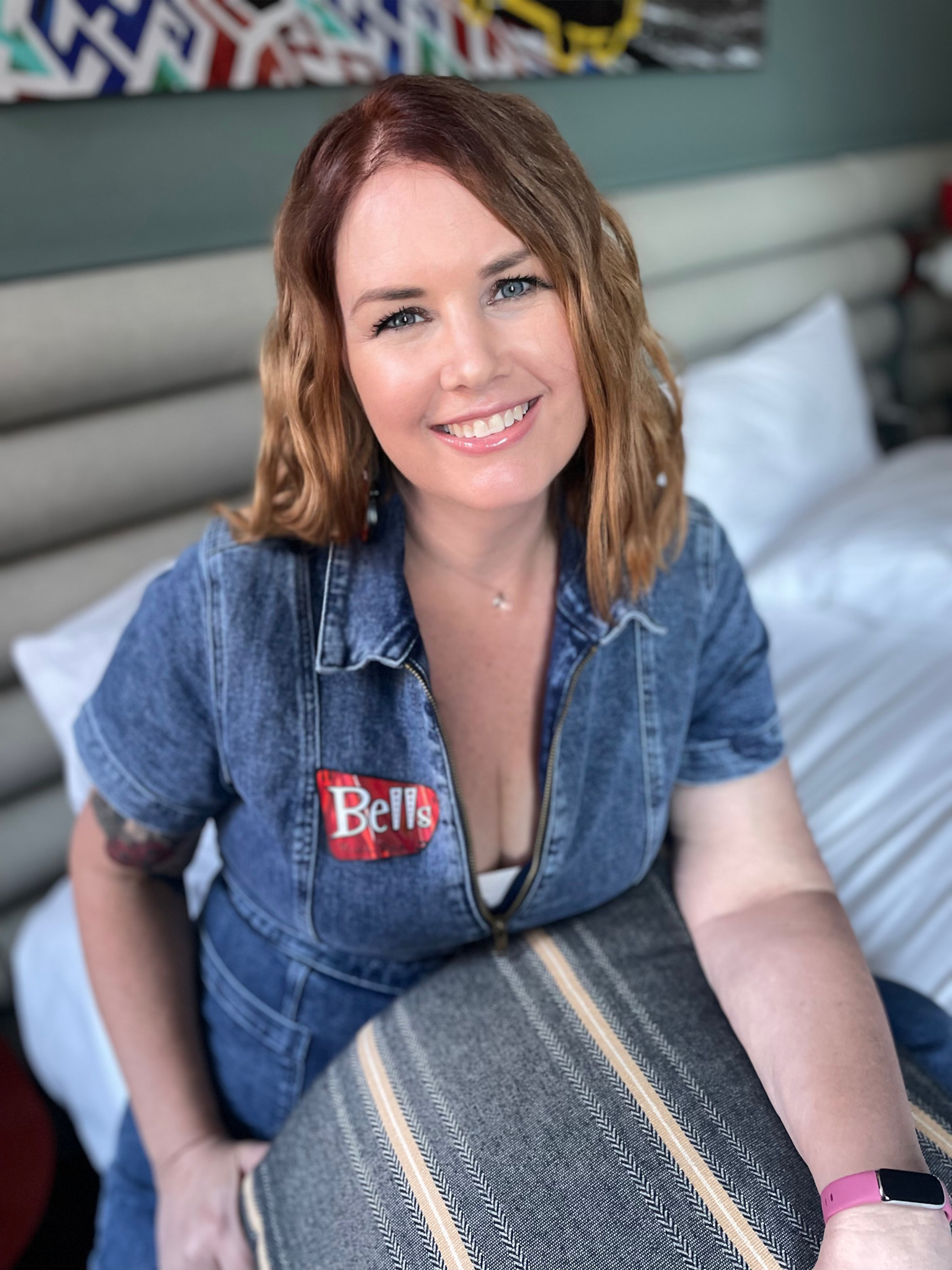
Bells owner Kylie Evans took over the business in March. Picture: Supplied
A self-confessed old soul, Ms Evans’ milk bar obsession began as a young girl growing up in Newcastle, when she would visit Jim’s Dairy Delite Bar (still in operation) with her car-obsessed father.
“Dad would ask, ‘who wants to come for a milkshake or an ice cream?’ Which was always code for who wants to come and look at second-hand cars in the yard across the street from Jim’s.”
“It was always a fair trade off.”
Bells Milk Bar offers an authentic experience by selling retro lollies – think gumballs, tattoo chewing gum, candy cigarettes, Allen’s toffee apples – but it’s the milkshakes that Ms Evans said customers are most obsessed with.
“You’d be amazed how many people are outraged if they don’t have it served in a metal cup,” she laughed.
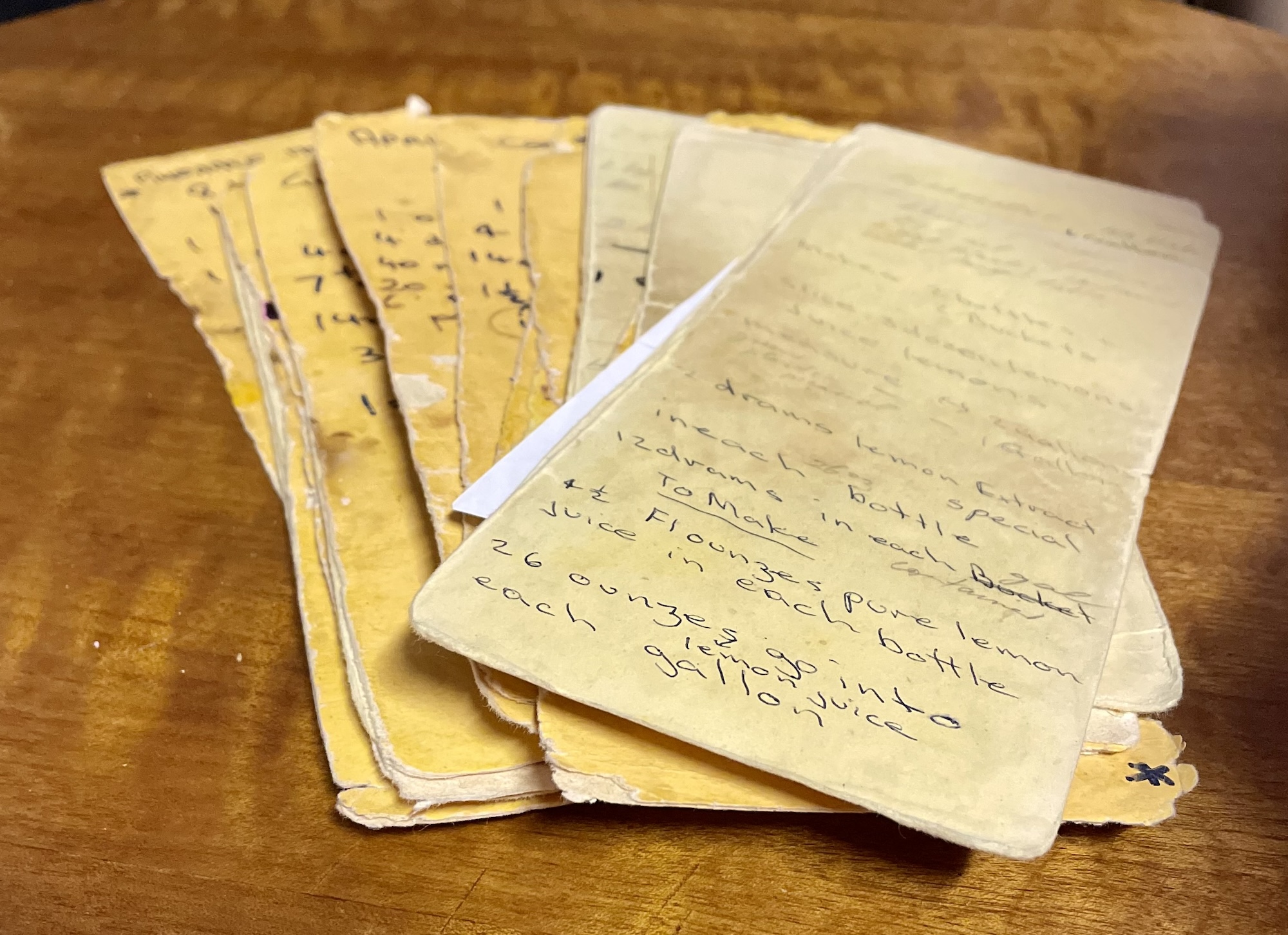
The original milkshake recipe cards which were handwritten by Bells’ original owner Les Bell Junior. Picture: Supplied
“They all have these memories from their childhood of milkshakes in metal cups and how cold they were. If they don’t get that, then there can sometimes be complaints.”
“What can you say? Nostalgia is a powerful emotion.”


